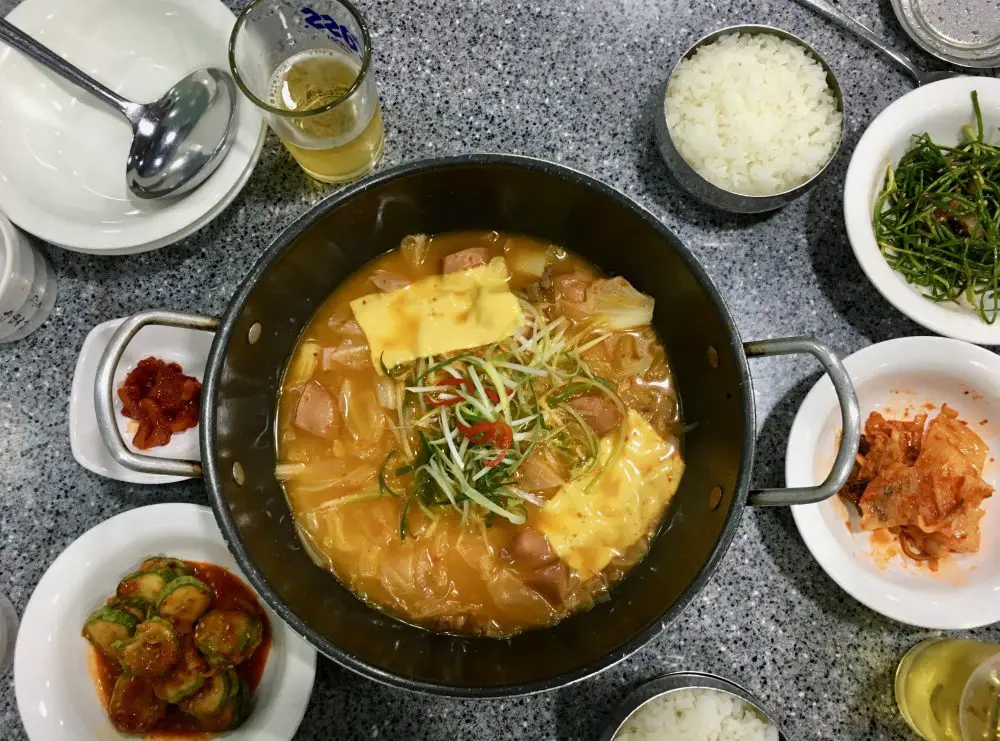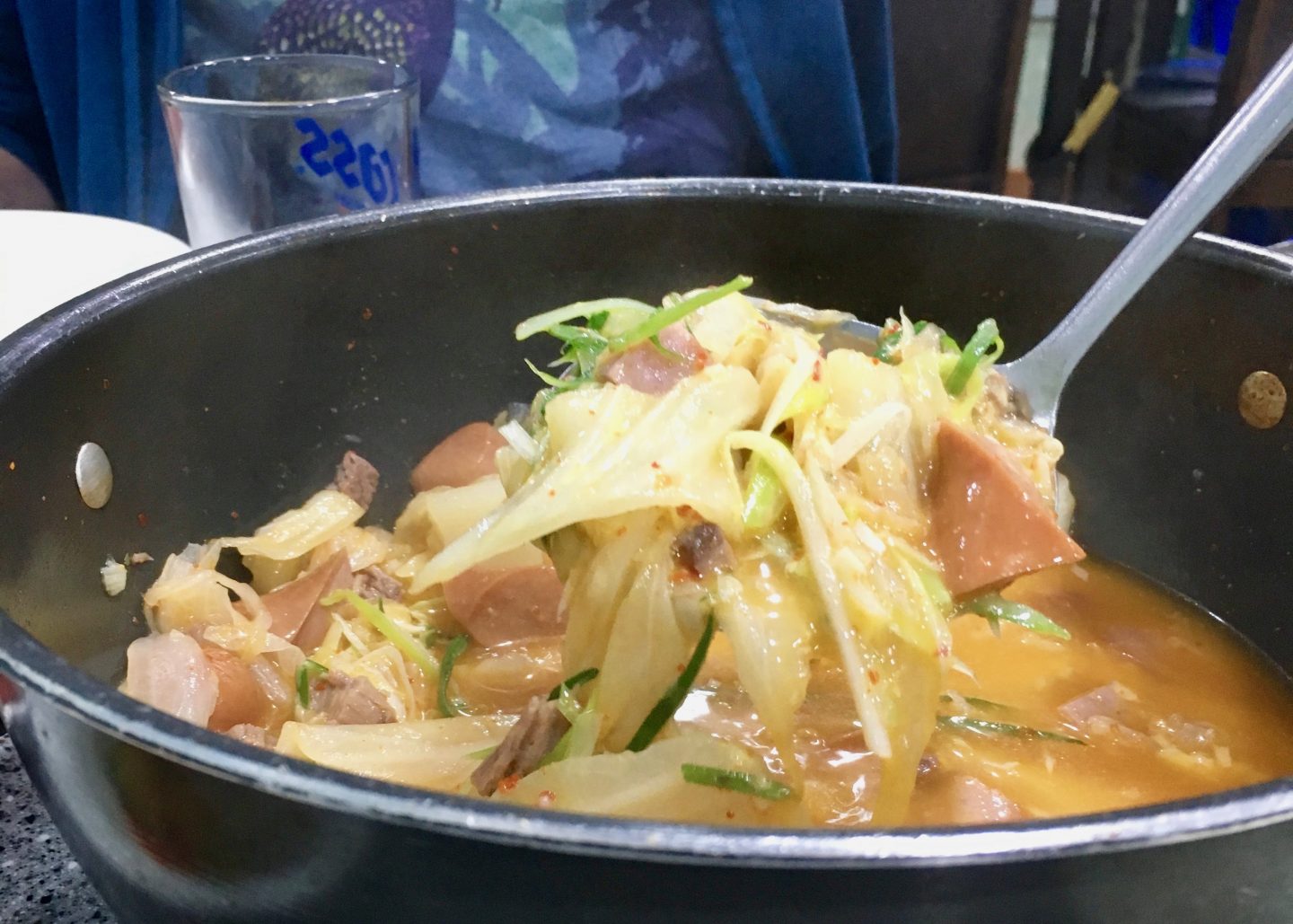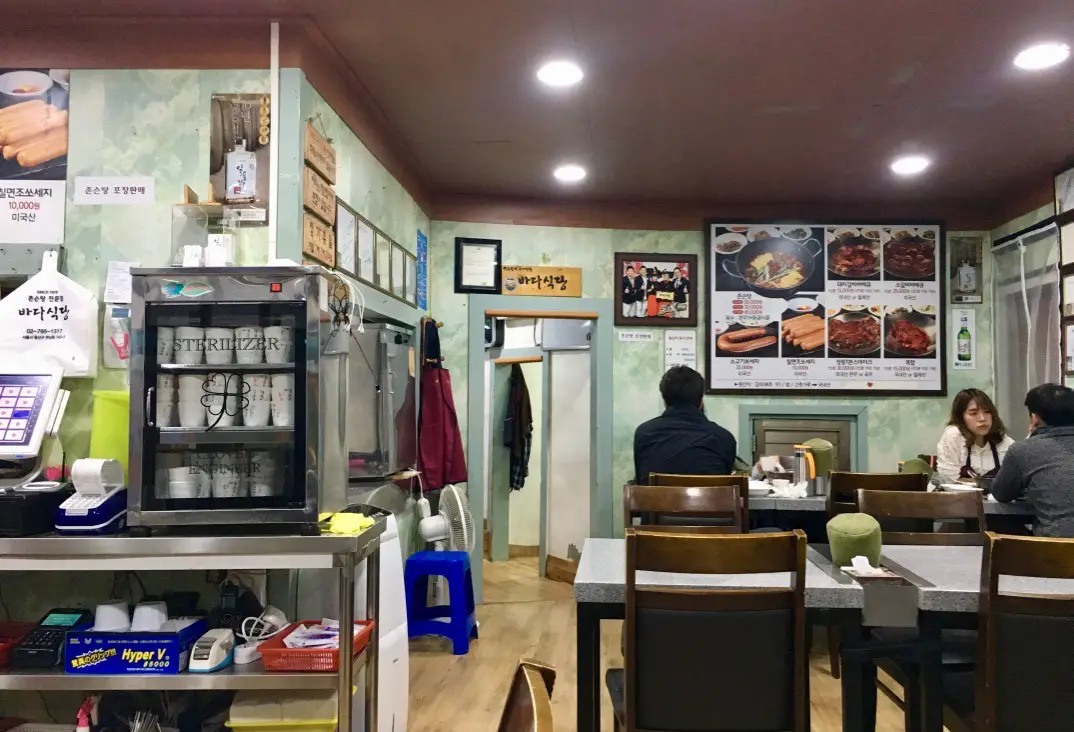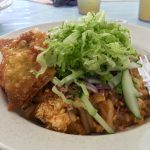
Budae jjigae is honestly fascinating. Hear me out, you might think I’ve gone mad but while on the surface, it looks like a typical Korean stew (which is now is), it’s actually representative of both Korean and American food cultures and is something which developed through circumstance rather than invention. I’ve seen it on menus here in the UK and in Australia but knew that to try the real thing, I needed to wait. I’m so glad I did.

A potted history:
In the Korean language, budae means army or army unit. jjigae means stew. The name ‘army stew’ is a very big clue to the origin story of this dish. It’s also sometimes called Jonseun-tang (Johnson Soup) and this dates it to the mid-1950’s. After the Korean War (1950-1953) foods such as spam, hot dogs, baked beans and cheese slices were often smuggled out of the US army bases to the locals. Their novelty made them popular with people living nearby, even though it was technically illegal to purchase or even have them in your possession as as a local Korean resident! Spam even became an enduring favourite, believe it or not. Over time, these ingredients were mixed with Korean food and hey presto, budae jjigae was born!
What is it?
From what I’ve read, there have been many variations of this dish over the years, but as a standard, it’s a spicy broth with kimchi, gochujang and a mix of spam, sausage, beans and cheese slices. As always, it tends to be served with sticky rice and sides like kimchi, sukju namul (seasoned beansprouts) and sigeumchi namul (seasoned spinach). A stew is never pretty but wow, this one tastes so good!

Where to eat budae jjigae in Seoul
There are plenty of places to eat budae jjigae in Seoul. It often appears on menus in family-style restaurants and there are also places which specialise in it. I tried several editions during our three week trip and the best place (in my limited but humble opinion) was Bada Sikgang on the edge of Itaewon. Unlike some other places, they added sliced American cheese to the top. It adds a creaminess which is delicious (yes really!).
Itaewon is a really multicultural area of Seoul, with lots of international restaurants around. Some people call it Western Town apparently, so kind of like China Town in the UK which is fun! It’s also close to Yongsan Garrison, the HQ for American forces in South Korea so it’s not surprising that a lot of places there serve Army Base Stew as its commonly known.

Do not expect ANYTHING fancy here. This place has been open for years, once just serving steaming bowls of jjigae from a hatch but now as a casual restaurant too. Service is brisk and foreigners mix with locals. The chairs are hard and uncomfortable and the lights garish but the food is cheap, authentic and very tasty.
Find Bada Sikdang here:
Want to read more about our culinary adventures in South Korea?
- A Korean cookery experience
- Eating dakgalbi in Chuncheon
- 5 must eat Seoul street food dishes
- Maekjoek: Korean royal BBQ pork



Who knew spam could look so appealing! Fabulous story, this – I love hearing about the origins of dishes, and fusions between different countries cuisines.
Great post! 🙂
I love trying out the authentic cuisine of the places I visit, so I totally get you. I’m glad you waited to try out the original Budae Jjigae in its place of origin.
I’ve tried a few versions of this here in the UK, in New Malden aka Little Korea – I learned the origin on a TV show a few years ago, it’s fascinating. I like it but I prefer the jigaes that use classic Korean ingredients. But it’s a fascinating fusion born of the war / post-war period and as such, definitely an interesting one.
Oh wow, I want to try that now! Where did you have the best Budae Jjigae in the UK? (Although, of course, I will also now have to travel to South Korea to try it too)
So funny – as I just recently tried a Korean spot home in NYC with a few friends and one thing we ordered was this stew of cheese, spam, hotdogs, etc. Sounds insane reading it on the menu, but it might honestly be one of my favorite things. So cool reading about the history behind it. Would love to try it IN Korea!
I’m not a hugely adventurous eater so I was ready to write it off as something I wouldn’t try, but hey, sausage, beans, and cheese, what’s not to like! Spam is questionable in any country but sounds like they make it delish
Yummmmmm. I can’t wait to go to Seoul one day. It’s always the small shops that are the best.
What an interesting history behind this dish. I love reading and discovering historical facts behind meals and reading your post I was astonished in knowing that spam have been so appreciated by Koreans. Thanks for sharing these facts!
I’ve been dying to go to Seoul for so long! It was so great to know how Koreans like spam when people dont really eat that at home.
That stew looks quite yummy Id love to go to Asia to eat some real authentic food..like PHO
Great post!
VAlerie
I love the stories and history behind different ethnic dishes! I think eating is such an important way to get to know a place! Thanks for sharing 🙂
Spam is HUGE here in Hawaii so I’m excited to try and eat this, lol. One of these days I think we’ll try to make this. My family loves to watch YouTuber Maangchi – a Korean lady who is awesome at Korean food. Definitely craving it now even though I’ve never had it!! Thank you!
OMG this sounds delicious! I love kimchi jiigae, it’s my favorite comfort food. You are telling me this jiigae has spam and cheese too?! My mouth is watering just thinking about it….
Fascinating story! I’m not an adventurous eater but I love to try new things every once in a while.
Who knew spam could look so appealing! Fabulous story, this – I love hearing about the origins of dishes, and fusions between different countries cuisines.